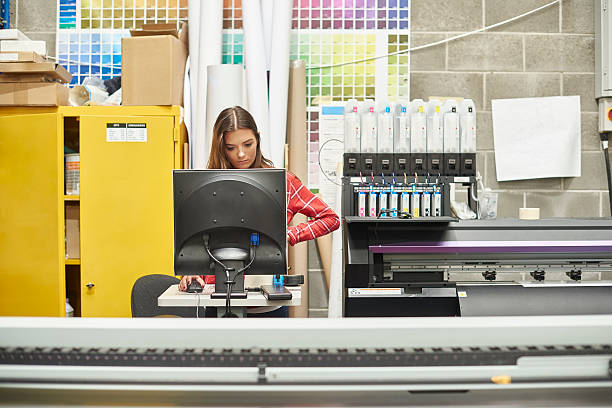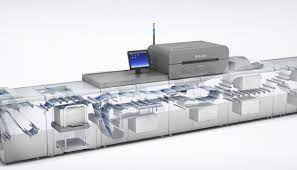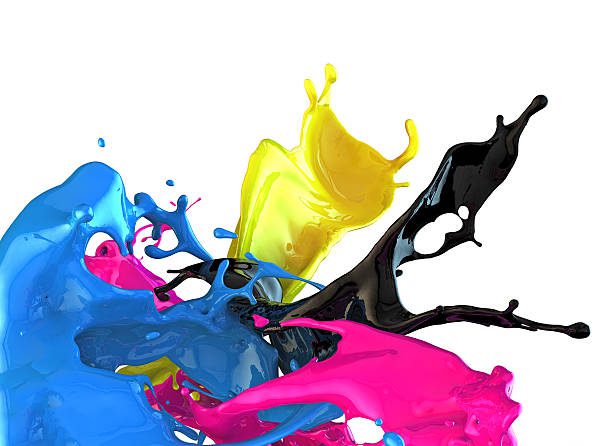
In today’s publishing world, digital printing is changing how magazines come to life by offering professional and cost-efficient printing mag services. This new method replaces old ways with digital tech. The change brings out the clear advantages of digital printing for magazines. These benefits let publishers keep up with what readers want. They also help publishers lead in the industry.
Digital Printing Mag Key Takeaways
- Digital printing means no costly plates, saving publishers money on setup.
- It’s cheap for small print jobs and still a great deal for big ones, making it very useful.
- Making magazines personal gets readers more involved and gets more people reading.
- Digital means quick, meaning they can meet tight printing and delivery needs.
- The print is top-notch, almost as good or better than the old way of printing.
How are is a Printing Mag printed Digitally?

Digital printing has changed the printing world. It’s different from offset printing, which uses plates. Digital printing directly prints digital images on items, making it a versatile printing service. This has made things easier for designers and businesses.
Digital printing uses computers to send images to printers. This process prints images onto materials like paper or fabric. It’s popular because it’s quick and saves money.
Versatility and Customization
Digital printing is great because it’s very versatile. It can handle small print jobs, personal items, or printing things as needed. This is perfect for making magazines that fit exactly what different people like to read.
- Digital printing means you get your prints quickly, without any delays.
- Without printing plates, it costs less, making it an affordable choice.
- Digital printers can print on many things, not just paper. They can handle fabrics and plastics too.
As digital printing gets better, it will change how we make and use magazines. It’s flexible, saves money, and produces great full colour prints. Digital printing is the future of printing.
Cost Efficiency in Digital Printing Mag Production
In the magazine publishing world, being cost-efficient is really important. Luckily, digital printing has changed the game. It offers a cheaper way compared to traditional offset printing. Digital printing skips the need for pricey setup steps like making plates. This makes it a nicer option for magazine makers on a budget.
Digital printing is great for smaller print jobs. Unlike offset printing, the cost per item doesn’t go down with more copies. With digital printing, the cost stays the same no matter the amount. This is good news for those doing both small and big orders of magazines. Additionally, digital printing can handle larger quantities, making it suitable for various types of publications.
What’s more, digital printing means magazines can be printed when they’re needed. This cuts down on keeping lots of magazines in stock and reduces waste. It means publishers can print just what they need. There’s no worry about having too much or too little stock.
- Digital printing eliminates the need for expensive printing plates, reducing setup costs.
- Consistent per-unit costs regardless of print volume, allowing for cost-effective small runs.
- On-demand printing reduces the need for large inventory and minimizes waste.
“Digital printing has revolutionized the magazine industry, providing a cost-efficient way to produce high-quality publications on a flexible, as-needed basis.” Choosing digital printing lets magazine publishers concentrate on creating engaging content. They can focus on their readers more and stress less about the costs of old-style printing. This means more good stuff for people to read and enjoy.
Customization and Personalization
In the digital age, publishers can make magazines that really grab people’s attention. Thanks to digital printing, they can offer content just for you. This makes readers more interested and loyal. For those looking for more, our Help Centre provides detailed information about each binding type offered for printed booklets and magazines.
Printing Mag production with Saddle Stitching for Diverse Audiences

Digital printing lets publishers make magazines that suit different groups of readers. They can use variable data printing to put each reader’s name on their magazine. Booklet printing offers saddle-stitched booklets in different sizes and orientations, with options for various paper stocks and finishes, making the magazine more interesting to the reader.
Readers find these tailored magazines more engaging. It leads to them being happier with what they’re reading. They like it better because it feels like it’s made just for them.
- Personalized content drives reader engagement and loyalty
- Variable data printing allows for customized elements like names, images, and text
- Tailored magazines resonate better with individual readers’ interests
Enhancing Customer Experiences Through Personalization
Customization helps publishers make better experiences for their readers. When readers see their own name in a magazine, they feel like the publisher knows them. This makes readers join and stay with the magazine because they feel special.
This kind of personal touch makes a big difference. In fact, it’s how publishers draw in new readers and keep them. Readers come back because they feel the magazine cares about them.
78% of travelers are more likely to book with properties that offer personalized experiences, and almost 50% are willing to share personal data for an individualized stay.
To stand out today, publishers need to meet readers’ varied expectations. Using digital printing and personalization helps. It lets publishers create magazines that truly connect with their readers. This builds stronger relationships and has a lasting effect.
Speed and Flexibility
In the fast-moving world of publishing, acting quickly is key. Digital printing beats traditional methods in both speed and flexibility. It has changed how magazines are made, making the process smooth from start to finish.
Additionally, digital printing offers various binding options, allowing you to choose the type of booklet, amount of pages, cover options, and time frames that best suit your needs.
Faster Turnaround Times
Digital printing is king when it comes to speed. It lets publishers react fast to what the market wants. This is way quicker than the old ways that used to take a long time to set up. This speed means magazines get to readers on time, every time.
On-Demand Printing
Digital printing’s flexibility spills over to on-demand printing. This means publishers don’t have to print lots of copies in advance. This can save them from spending too much on inventory and throwing away unsold magazines. They can print exactly when needed, which is efficient and smart.
Thanks to digital printing, publishers can run their businesses in a more agile way. They cut down on costs and print with unbelievable speed and flexibility. They can now keep up with what readers want, exactly when they want it.
High-Quality Output with Various Binding Options
The printed magazine world has changed a lot. This is all thanks to digital printing becoming better. Now, the quality of prints can match or even beat the old way of printing. This gives readers a super nice visual treat.
Digital printing shines in making sharp, colourful text and images. It’s great at showing tiny details too. This makes photos and drawings look so real, it catches the eye of anyone flipping through a magazine.
With digital printing, every page in a magazine looks the same. The colours and clarity are always spot-on. This makes the magazine seem very professional. Readers notice this and it leaves a good feeling about the magazine.
Digital printing also offers a variety of paper stocks, including different finishes and sizes for customization, enhancing the overall quality and appeal of the printed product.
“The advancements in digital printing technology have truly elevated the quality of printed magazines, delivering an experience that is on par with, or even surpassing, traditional offset printing.”
Digital printing also loves to try out many types of paper and finishes. This lets publishers create magazines that feel and look unique. These special designs make magazines really stand out from the rest.
Publishers using digital printing can make their magazines look better and more interesting. This makes reading their magazines feel like a treat. And when readers enjoy a magazine so much, they usually want more.
Printing Mag Production the Environmentally Friendly way

The world is more aware of the need to protect the planet. So, the printing industry is changing how it works. Digital printing is a big part of this change. It meets the call for eco-friendly products and services. Perfect binding, using strong PUR adhesive and offering cover laminations for extra strength, is an eco-friendly option suited for large books.
Digital printing makes much less waste than offset. It doesn’t need printing plates and can print only what’s needed. This uses fewer resources and is better for the planet. It’s also about using less energy and eco inks. These things matter a lot to people looking for green options.
- In Europe, almost 80% of all printed matter is printed on paper, making the environmental impact of the printing industry a pressing concern.
- The environmental impact of PaperWise paper is 29% lower than recycled paper and 47% lower than paper made from trees, showcasing the benefits of sustainable sourcing.
- PaperWise has ensured that more than 31,800 trees have not been cut down since its establishment, demonstrating the positive impact of eco-friendly alternatives.
Choosing digital printing helps the Earth. It also meets what people want. Many in the Netherlands, for example, look for green products. This shows a big interest in eco printing.
Research indicates that 88% of companies that actively adapt to environmentally and socially responsible processes achieve better operational results.
If magazine publishers use digital printing, they can lower their impact. This shows they care about the Earth. It attracts readers who care, and prepares the industry for the future.
As printing changes, digital printing with eco-friendly ways is key. It cuts waste, uses less, and meets eco needs. This is how the industry keeps up and does its part for the planet.
Enhanced Creative Possibilities with Full Colour Printing Mag Production

Digital printing has changed the game for magazine makers. It breaks the rules of old-fashioned printing, letting designers try new things. They can use cool layouts, different formats, and items that readers can interact with.
Designers can choose between portrait orientation and landscape orientation for their booklets and magazines, offering a range of sizes to fit their creative needs.
Now, designers can make magazines that really pop. They get to try cool stuff like foldouts and pop-ups, making the magazine fun to look at. This sparks a real interest in what’s inside.
But wait, there’s more. Digital printing also lets magazines have things like QR codes and clickable links. This makes reading a magazine feel like an adventure, mixing the best of both print and digital. People get more involved in what they’re reading, making the whole experience memorable. “The possibilities are endless when it comes to creating unique and engaging magazines through digital printing. It’s an exciting time for the industry, as publishers can truly push the boundaries of creativity and bring their visions to life.” The world of digital printing is always growing. It lets magazine makers do more with their creativity. This makes the magazines more interesting and fun for the readers. The future is bright for printed magazines, thanks to digital printing.
Better Analytics and Insights
Digital printing has changed how publishers understand their readers. They now have better tools to see what their audience likes. This helps them adjust content and delivery to better fit their readers’ needs.
Digital printing is also ideal for creating premium hard cover books used for presenting annual reports and financial plans.
With digital printing, publishers can gather lots of data. They learn who reads their magazines and what they like. This info guides them in making smart choices for their magazines’ futures.
Unlocking the Power of Printing Mag Production Digitally
Publishers can now study how readers interact with their magazines. They look at page views, time spent on articles, and social media activity. This helps them see what content readers love most.
By using this data, publishers can plan better. They can improve the magazine’s impact and make it better for readers. This new approach from digital printing can really boost a magazine’s success.
By harnessing the power of digital printing analytics, publishers can gain a competitive edge and deliver content that truly resonates with their audience.
Staying ahead in media today means understanding your audience well. Digital printing lets publishers do this. It gives them the insights to make their magazines better than ever for readers.
Printed Mag Revolution
The printed magazine industry has changed a lot because of digital printing. This new technology has made producing and reading magazines different. Now, it’s cheaper and easier for publishers to print magazines that look great. So, the way the magazine world works is shifting.
With digital printing, publishers can also choose from various binding options, including saddle stitched booklets, which offer a professional finish with a slightly rounded spine and flat sitting pages.
Digital printing is fast and flexible, unlike traditional methods. There’s no more waiting for long setup times. This makes it simple for publishers to meet what readers want quickly. They can make magazines that suit different people or topics without any delay. This speed helps keep the magazines interesting and up-to-date.
Also, digital printing is good for the environment. It reduces waste and cuts down on pollution. This fits with what readers want today: more eco-friendly practices. By using digital printing, publishers help keep the planet healthy. And, they build a better image with readers who care about the earth.
Digital printing doesn’t just change how magazines are made. It also lets publishers be more creative. They can try out new designs and features. This makes the magazines more fun and appealing. Plus, they can track what readers like. This way, they can make magazines that are more interesting and enjoyable to read.
The magazine world is moving fast towards digital printing. It’s now seen as a must-have for publishers. This change brings many good things. It saves money, helps the planet, and makes magazines better to read. The future of magazines looks bright with digital printing leading the way.
Advantages of Digital Printing Mag Production
Digital printing is great for magazine publishers. It’s cost-effective and has low setup costs. It also keeps a steady price per item, no matter how many you print. With digital printing, you get top-notch quality, just like offset printing, but with accurate and consistent results.
One of the binding options available with digital printing is saddle stitching, which is ideal for booklets and magazines.
Digital printing is all about speed and flexibility. It turns things around faster and lets you print on-demand. This means less waste and lower inventory costs. Plus, it’s friendlier to the planet, making far less waste than offset printing.
Publishers love how they can customize their work with digital printing. With variable data printing, they can address magazines to certain readers. This makes for a more interesting read.
Digital printing is also known for its color accuracy. It brings out bold, consistent colours, almost like offset printing. This opens up a world of creativity and makes the final product look stunning. “Digital printing offers a cost-effective solution with lower setup costs and consistent per-unit pricing, regardless of print run size.”
The Benefits of Digital Printing Mag Production at a Glance:
- Cost-effective: Lower setup costs and consistent per-unit pricing
- High-quality: Delivers output that rivals traditional offset printing
- Accurate and consistent: Ensures precise and reliable results
- Fast and flexible: Enables on-demand printing and reduced turnaround times
- Eco-friendly: Produces less waste compared to offset printing
- Customizable and personalized: Allows for tailored content and targeted messaging
- Exceptional color accuracy: Offers vibrant and consistent colors
- Wire binding: Provides a durable and professional binding option for booklets and magazines
Overall, digital printing stands out because it’s cost-effective, high-quality, and fast. It’s also eco-friendly and lets you customize your materials. This makes it an ideal choice for magazine publishers wanting to meet unique needs.
Digitally Printing Mag – A Conclusion
The digital printing revolution has changed the game for Australian magazines, both with Saddle Stitched magazines and Perfect Bound Magazines. It brings many benefits. These range from cheaper printing costs to tailoring content for readers. It also means better quality prints and less harm to the environment.
This change is helping publishers engage with readers more. They can improve operations and keep up in a changing market. Thanks to digital printing, the future of magazines in Australia is getting brighter.
More growth is expected in the digital printing field. Publishers can use this to their advantage. They will save money, make their magazines more personal, and help the planet. This will boost loyalty and sustainability in publishing.
The future of Australian magazines is exciting with digital printing. It’s bringing new ways to innovate, connect with readers, and work better. Publishers are using these new tools to make their mark. They’re ensuring that booklets & magazines remain popular in the digital era.








